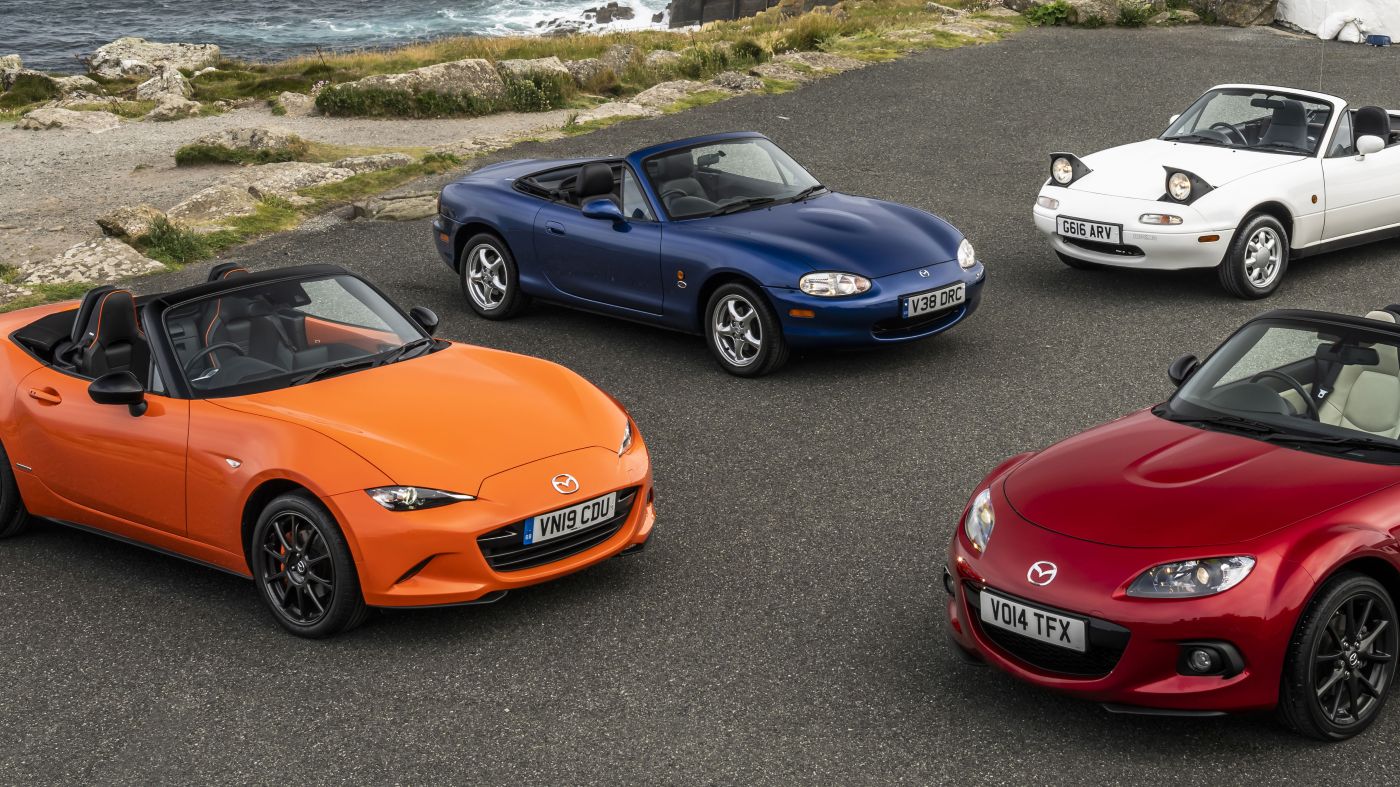Mazda has built a reputation for blending driving pleasure with reliability, offering vehicles that feel sporty without sacrificing practicality. The brand has delivered several models over time that have stood the test of time, running smooth well past the 200,000-mile mark with proper care.
However, not every Mazda earns that badge of long-term dependability. Some models, plagued by design flaws or premature wear, tend to leave owners frustrated sooner than expected.
In this article, we’ll break down five Mazdas known for their impressive longevity, the ones that will keep you smiling behind the wheel and five that tend to wear out too soon, often racking up repair bills long before they should.
5 Mazdas That Keep Running Smooth
Not every car brand can balance performance, reliability, and longevity the way Mazda does. Over the years, several Mazda models have earned a reputation for staying dependable long after their odometers have passed the 100,000-mile mark.
These vehicles combine solid engineering with straightforward maintenance, making them favorites among drivers who want both driving enjoyment and long-term value. Below are five Mazdas that stand out for their ability to keep running smooth, year after year, with minimal drama.
1. Mazda3 (2004–2013)
The first- and second-generation Mazda3 earned a loyal following thanks to their fun-to-drive nature and bulletproof reliability. With simple, naturally aspirated engines and straightforward transmissions, these cars regularly exceed 200,000 miles with only routine maintenance.
Owners often praise the Mazda3’s durable suspension and rust-resistant later models, making it a compact car that holds up as well as any Toyota Corolla or Honda Civic.
The 2007 Mazda 3 stands out for its lively and refined engine options. The base “i” trim comes with a 2.0-liter four-cylinder engine producing 148 horsepower, while the sportier “s” models are powered by a 2.3-liter four-cylinder that increases output to 156 horsepower and delivers more torque (150 pound-feet versus 135 lb-ft).
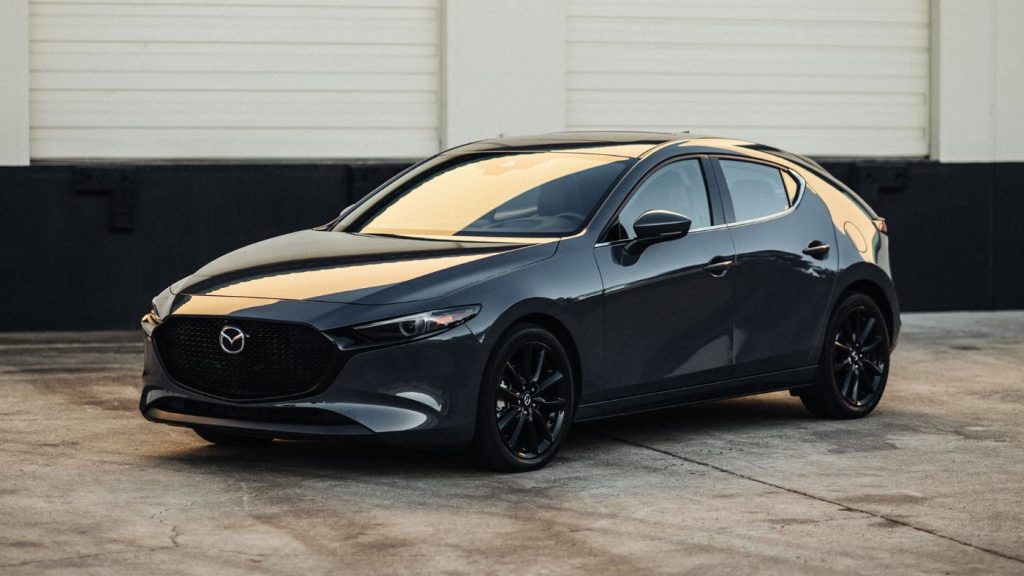
The 2.3-liter also features balance shafts to enhance smoothness. Both engines use variable valve timing, improving both responsiveness and efficiency. On top of this, the Mazda 3 offers handling and ride dynamics far superior to most economy cars.
Thanks to chassis components borrowed from the Mazda 6 midsize sedan and precise tuning, the 3 drives more like a budget-friendly sport sedan. The only drawback is that some may find its ride quality a bit on the firm side.
Complementing its strong mechanicals, the 2007 Mazda 3 sports a stylish exterior and a well-designed interior that reflects its athletic character. This model year introduces updated front and rear fascias across the lineup, along with new taillights: clear-lens units for the i trims and LED versions for the Grand Touring sedan.
Also Read: Top 10 Cars With Easy-to-Clean Floors and Accessible Interiors
2. Mazda MX-5 Miata (All Generations)
The Miata is not just a roadster icon; it’s a reliability legend. Known for its lightweight design, simple engineering, and bulletproof engines, the MX-5 has consistently delivered decades of dependable driving.
Enthusiasts regularly push these cars on twisty roads and track days, yet with proper maintenance, even high-mileage Miatas retain their smooth, engaging drive. It’s a car that proves fun doesn’t have to come with a reliability compromise.
A true modern-day automotive icon, the 2021 Mazda MX-5 Miata carries forward the legacy of the compact, lightweight, and dynamically balanced two-door sports car that first appeared over three decades ago.
Often regarded as the spiritual successor to the classic British and Italian roadsters, this car, although originally inspired by British design, has been perfected and immortalized by one of Japan’s most respected automakers.
With its traditional 181-horsepower four-cylinder engine, six-speed manual transmission, and rear-wheel-drive layout, Mazda has worked diligently to keep the MX-5 Miata as pure and unfiltered as possible, preserving the essence of what makes driving so enjoyable.
In the U.S. market, the Miata’s only real competitors are the Toyota GR 86 and Subaru BRZ, both set to debut as fully redesigned models for 2022.
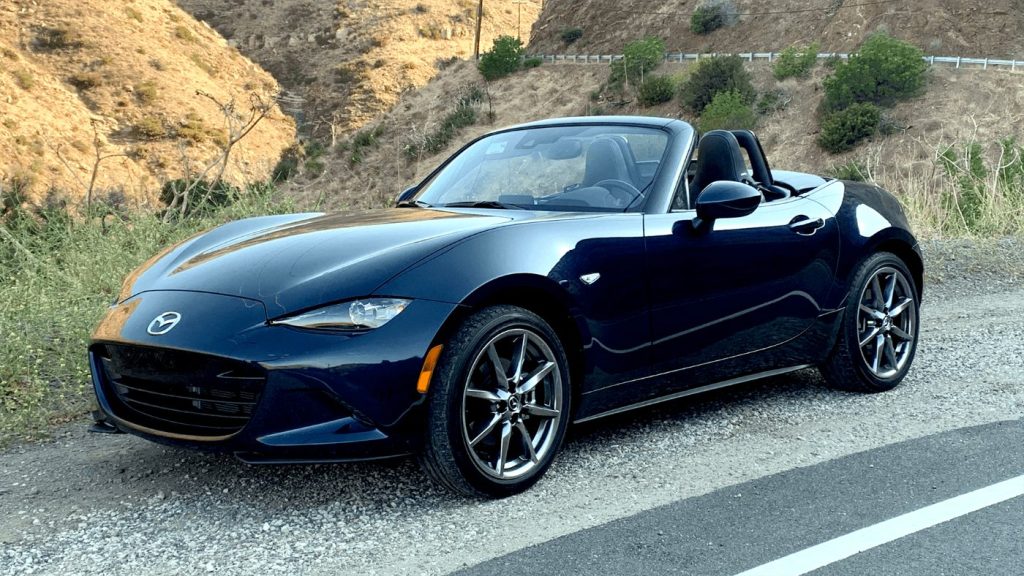
The once-celebrated Fiat 124 Spider exited the market last year. Soon, the MX-5 will transition to a hybrid powertrain, signaling that the ND-generation may be the final iteration to uphold the naturally aspirated heritage that enthusiasts cherish.
As a niche yet iconic contender, the 2021 Mazda MX-5 Miata embodies qualities that delight driving enthusiasts, purists, and casual motorists alike. Its naturally aspirated engine, paired with a manual transmission and classic rear-wheel-drive dynamics, captures the timeless joy of driving.
While many automakers focus on building excessively powerful cars that rarely reach their limits on public roads, Mazda adheres to the philosophy that true fun lies in balance and connection, not just raw speed.
Behind the wheel of the Miata, drivers immediately understand this wisdom; the car is agile, engaging, and thrilling at any pace. Its design remains modern yet retains nods to its predecessors, giving it enduring appeal.
Inside, the cabin offers a contemporary feel with thoughtful comforts, conveniences, and an impressive infotainment system. Although official crash-test ratings for the 2021 model are unavailable, it comes equipped with a solid set of driver aids and safety features. The fact that it starts at under $30,000 makes its value proposition even more compelling.
Choosing a 2021 MX-5 Miata is hardly a risky decision, as every variant is engineered to deliver a great driving experience. Whether you opt for the manual or the automatic, the Miata’s character shines through.
3. Mazda CX-5 (2013–Present)
The first-generation CX-5 marked Mazda’s leap into modern crossovers with Skyactiv technology, and it’s been a hit with families and commuters alike. The 2.5-liter engine in particular has proven to be a workhorse, with few major issues even at high mileage.
Owners appreciate the blend of car-like handling, strong fuel efficiency, and low long-term maintenance costs. Later models improved interior durability, making the CX-5 a top pick in the compact SUV segment.
The 2015 Mazda CX-5 Sport with front-wheel drive is powered by a 2.0-liter four-cylinder engine producing 155 horsepower and 150 pound-feet of torque. A six-speed manual transmission comes standard, while a six-speed automatic is available as an option.
For models equipped with all-wheel drive, the automatic transmission is standard. It’s worth noting that Mazda only offered the CX-5 Sport with the 2.0-liter engine and AWD for a short time before transitioning this configuration to the larger 2.5-liter engine.
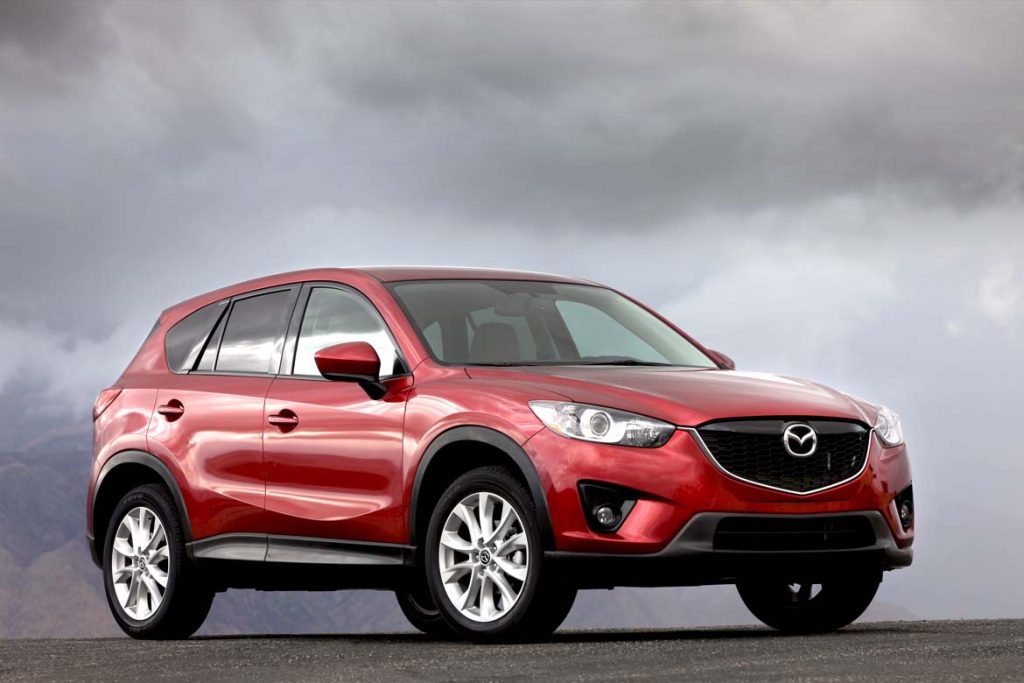
The manual transmission version also delivers 29 mpg combined but boasts a higher 35 mpg on the highway. Opting for AWD with the automatic drops estimates slightly to 28 mpg combined (25 city/31 highway).
For the Sport AWD built after May 2014, along with the Touring and Grand Touring trims, Mazda equipped these versions with a more robust 2.5-liter four-cylinder engine producing 184 horsepower and 185 pound-feet of torque.
A six-speed automatic transmission is standard across these models, and both front-wheel and all-wheel-drive configurations are available for the Touring and Grand Touring trims.
4. Mazda6 (2014–2021)
Mazda’s midsize sedan stands out not just for its sharp looks and engaging handling, but also for its reliability. The 2.5-liter Skyactiv-G engine avoids the complexity (and problems) of turbos in its base form, making it a smooth performer over the long haul.
Owners report that with regular oil changes and transmission servicing, the Mazda6 can easily surpass 180,000–200,000 miles with minimal fuss.
The 2017 Mazda6 introduces G-Vectoring Control, a system designed to reduce the need for frequent steering adjustments while driving.
At the top of the lineup, the Grand Touring trim can now be equipped with the Premium package, which includes luxurious additions such as Nappa leather upholstery, a black headliner, a heated steering wheel, heated rear outboard seats, the i-ELOOP regenerative braking system, and bright metallic accents on the switches.
Additionally, the 2017 model benefits from a quieter cabin, achieved through the use of extra sound-deadening materials in the underbody, rear console, doors, and headliner, along with thicker front glass and laminated side windows.
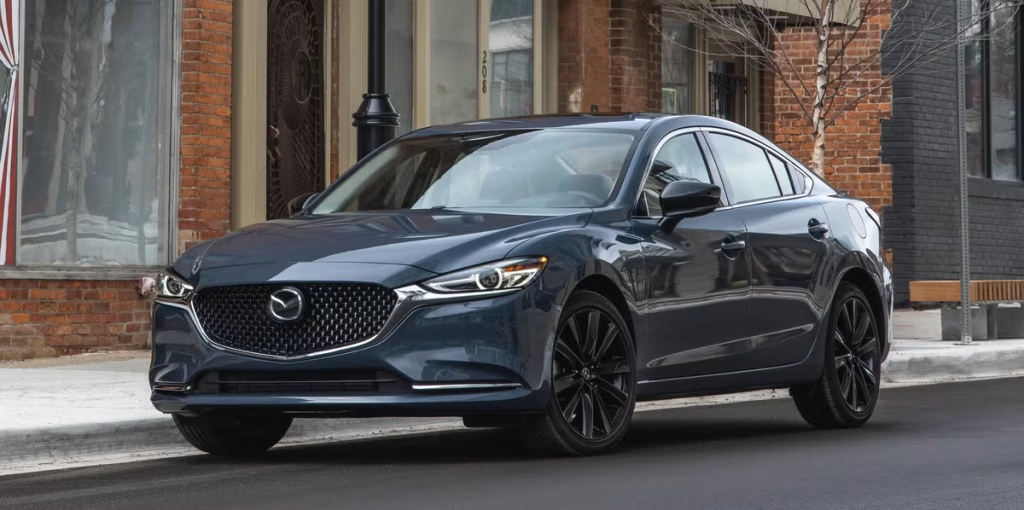
Positioned above the compact Mazda3, the 2017 Mazda6 is a front-wheel-drive midsize sedan and currently serves as Mazda’s largest sedan offering.
Powering the 2017 Mazda6 is a single engine option, a 2.5-liter inline-four producing 184 horsepower and 185 pound-feet of torque. A six-speed manual transmission comes standard on the Sport and Touring trims, while a six-speed automatic is available as an option for these versions and comes standard on the Grand Touring model.
Notable available features include a rearview camera, Bluetooth connectivity, leather upholstery, navigation with a seven-inch touchscreen, heated front seats, a head-up display, keyless entry and start, a Bose premium audio system, and 19-inch alloy wheels on Touring and Grand Touring trims.
Additional highlights include LED headlights and fog lights, a power-adjustable driver’s seat with memory settings, and advanced driver assistance features such as blind-spot monitoring with rear cross-traffic alert.
Also Read: 5 Forgotten Family Cars That Last vs 5 Bestseller Family Cars With Issues
5. Mazda Tribute (2005–2011, with Ford V6)
Though not often mentioned, the later Mazda Tribute models—particularly those equipped with the Ford-derived 3.0L V6—are surprisingly reliable. These SUVs share a lot with the Ford Escape but benefited from Mazda’s solid engineering tweaks.
They may not be the flashiest Mazdas, but they have a reputation for dependable powertrains, sturdy suspensions, and longevity when properly maintained.
In many ways, the 2010 Mazda Tribute comes across as a modern compact crossover SUV. Being a twin to the Ford Escape, it inherits a similar blend of strengths and weaknesses.
On the positive side, the Tribute offers attractive exterior styling, a choice between a capable four-cylinder or a stronger V6 engine, and excellent safety ratings. However, a collection of small drawbacks ultimately prevents this SUV from standing out against its rivals.
The most noticeable shortcoming is its dated interior. Unlike newer competitors, the Tribute is missing several now-standard conveniences, such as a telescoping steering wheel and a rear seat that both reclines and slides for added versatility.

Adding to the frustration are its brakes, front discs paired with outdated rear drums which don’t perform as well as those found on many other small SUVs. Another letdown is the absence of the Ford Escape’s useful “Sync” multimedia interface, which provides seamless voice control for cell phones and portable audio devices.
When compared to segment leaders like the Chevrolet Equinox, Honda CR-V, Nissan Rogue, Subaru Forester, Toyota RAV4, and Mazda’s own sporty CX-7, the Tribute falls short in areas like overall refinement, braking ability, and interior functionality, despite offering competitive performance and crash test scores.
If the Tribute still appeals to you despite these shortcomings, it’s worth considering the Ford Escape instead, particularly one equipped with the Sync system.
The 2010 Mazda Tribute is available with either front- or all-wheel drive across its lineup. The Tribute i is powered by a 2.5-liter four-cylinder engine producing 171 horsepower and 171 pound-feet of torque.
This engine comes standard with a five-speed manual transmission on the Sport trim, while a six-speed automatic is optional for the Sport and standard on higher trims. For those seeking more power, the Tribute s models feature a 3.0-liter V6 generating 240 horsepower and 233 pound-feet of torque, paired exclusively with a six-speed automatic transmission.
Also Read: Top 10 Trucks That Don’t Sag With a Trailer Load
5 Mazdas That Wear Out Too Soon
While Mazda has built a solid reputation for reliability, not every model hits the mark when it comes to long-term durability. Some Mazdas have a history of developing issues earlier than expected, whether due to problematic engines, weak transmissions, or components that just don’t hold up under regular use.
These vehicles may still offer an enjoyable driving experience, but owners often find themselves facing costly repairs sooner than they’d like. Here are five Mazdas that have a tendency to wear out too soon, so you’ll know what to watch for if one is on your radar.
1. Mazda CX-7 (2007–2012)
The CX-7 is infamous for its early turbocharged 2.3-liter engine issues, including oil sludge buildup, turbo failures, and timing chain stretch. Many owners experienced expensive repairs well before 100,000 miles, particularly if maintenance wasn’t meticulous.
While the non-turbo 2.5-liter version fared better, the CX-7’s overall reliability record tarnished Mazda’s SUV reputation during this era.
Until recently, Mazda’s SUV lineup consisted solely of the compact Tribute, a model that essentially mirrored the Ford Escape. With the arrival of the 2007 CX-7, Mazda steps into the midsize crossover SUV segment, a market that has rapidly gained popularity.
This category attracts buyers seeking the all-weather confidence of all-wheel drive, ample cargo space, and an elevated driving position, all while maintaining the smooth ride and agile handling of a car. For the CX-7, Mazda borrowed styling cues from its Miata and RX-8 sports cars and infused performance-oriented hardware inspired by the Mazdaspeed 6 sport sedan.
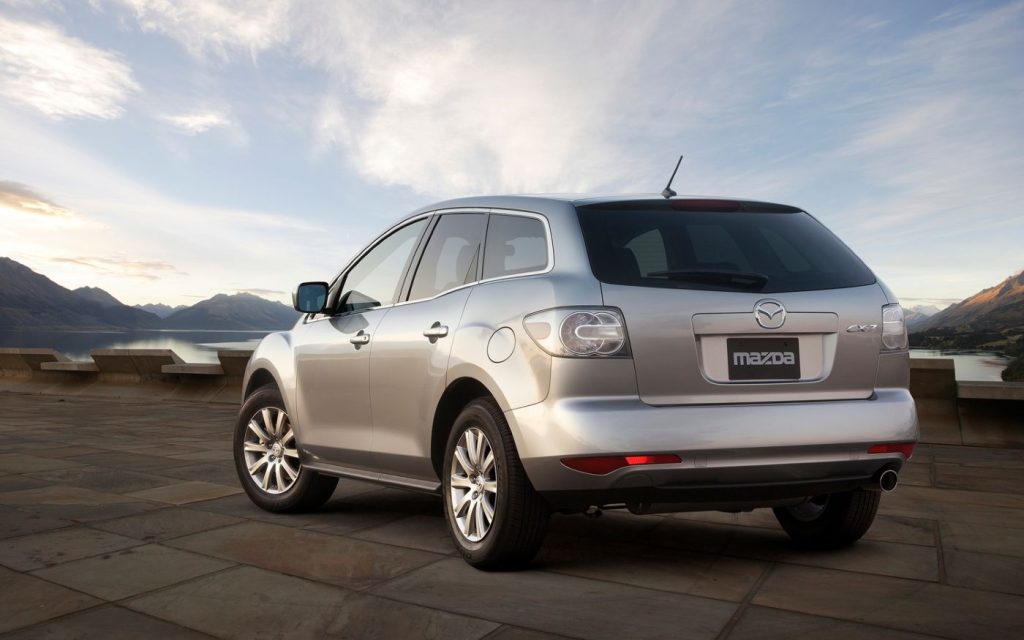
Under the hood, the 2007 Mazda CX-7 houses a turbocharged 2.3-liter inline-four engine, shared with the spirited Mazdaspeed 6 but tuned for a broader powerband at the cost of peak output.
It’s paired with a six-speed automatic transmission and supported by a fully independent suspension, with ventilated disc brakes on all four wheels. Reinforcing its focus on on-road performance, the CX-7 comes standard with 18-inch wheels wrapped in 235/60 street tires, while an optional all-wheel-drive system further enhances its capability.
With a starting price in the mid-$20,000s, the CX-7’s primary rivals include the Honda CR-V, Saturn Vue Redline, and Toyota RAV4 V6, though its dimensions align more closely with the larger, pricier Nissan Murano. What sets it apart is its distinctively sporty character.
Built for driving enthusiasts who crave both roominess and affordability in a performance-focused SUV, the 2007 Mazda CX-7 lives up to Mazda’s promise. Its athletic interior design, precise handling, responsive steering, brisk acceleration, and strong braking power make it easy to forget you’re behind the wheel of a family-friendly crossover.
2. Mazda RX-8 (2004–2011)
Beloved by enthusiasts for its rotary engine and sharp handling, the RX-8 is also notorious for poor reliability. The Renesis rotary engine is prone to apex seal wear, flooding, and high oil consumption, often requiring rebuilds under 100,000 miles.
While thrilling to drive, this car demands a level of maintenance and care that many owners weren’t prepared for, making it a risky buy on the used market.
Sport coupes have a long history, but few have been as unconventional as the 2006 Mazda RX-8. This sharp-handling car stands out as the only new production vehicle in the world powered by a rotary engine, and it’s also the only sport coupe to feature rear-hinged doors that open backward, granting access to an unexpectedly spacious four-passenger cabin.
Today, the Wankel rotary engine is practically synonymous with Mazda. Compared to a traditional piston engine, it offers several advantages: higher specific output for its size, lighter weight, and fewer moving parts. Mazda’s latest “Renesis” rotary design addresses many of the drawbacks that previously plagued this technology.
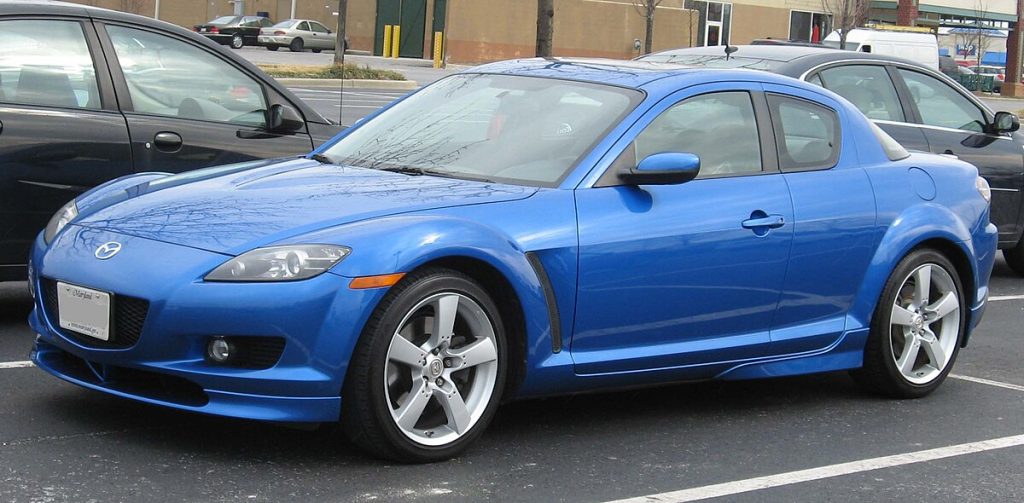
In the RX-8, engineers capitalized on the rotary’s compact dimensions and light weight to position the engine optimally. This setup results in an ideal 50/50 weight distribution between the front and rear wheels, a low center of gravity, and a sleek hood line that enhances both the car’s sporty appearance and its aerodynamic efficiency.
Weighing in at roughly 3,000 pounds, some 300 to 400 pounds lighter than its closest competitors, the RX-8 delivers exceptional handling. Few cars manage to strike such a fine balance between precise handling and a comfortable ride as effectively as this Mazda.
The concept of a “2+2” sports car isn’t new, but the RX-8 redefines it with its innovative “freestyle” rear doors, which open in the opposite direction of the front doors. These doors simplify loading passengers and cargo alike. Rear occupants under six feet tall will find the seating supportive and the space surprisingly accommodating.
Alternatively, the rear seats double as a convenient spot for stowing luggage or grocery bags, although they do not fold down, preventing a seamless connection to the trunk area.
3. Mazda5 (2012–2015)
While the Mazda5 offered minivan practicality in a compact package, it struggled with long-term durability. Owners reported premature suspension wear, rust issues, and transmission problems, particularly in the later years. Though not catastrophic, the frequency of repairs made it less appealing compared to rivals like the Toyota Sienna or Honda Odyssey.
The Mazda 5 delivers an often-overlooked advantage: it’s genuinely fun to drive. While many automakers claim their minivans handle like cars, the Mazda 5 backs it up with a sporty suspension and sharp, precise steering.
Whether you’re cruising down a winding back road or just weaving through a crowded strip mall parking lot, the 5 feels nimble and responsive. Its compact dimensions further enhance maneuverability, making it easy to slip through tight spaces and snag those hard-to-reach parking spots.
However, the 2013 Mazda 5 won’t meet everyone’s needs. Larger families may find themselves short on space, especially when the trip involves bikes, luggage, or pets.
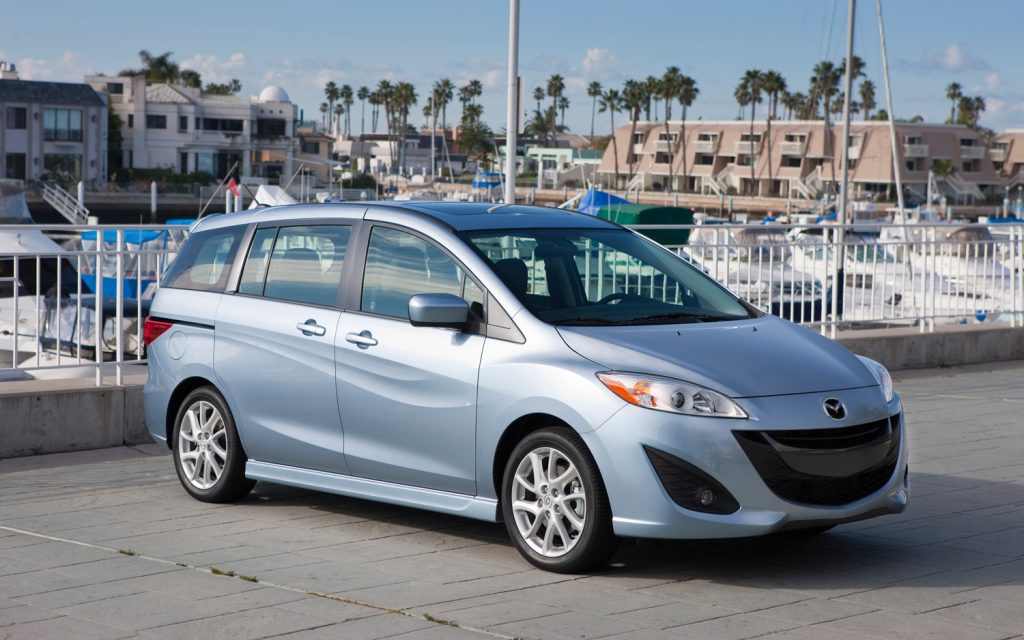
While its eager four-cylinder engine offers adequate power, those accustomed to the grunt of a V6 might miss the extra muscle, particularly on steep inclines or when the van is fully loaded with passengers.
Additionally, the Mazda 5 skips some of the features that have become standard in today’s minivan market, such as power-sliding doors, built-in sunshades, and factory-installed navigation or entertainment systems.
For these reasons, the 5 shines best as a niche, yet highly appealing, alternative to mainstream options like the 2013 Honda Odyssey and 2013 Toyota Sienna.
All 2013 Mazda 5 models come equipped with a 2.5-liter four-cylinder engine delivering 157 horsepower and 163 pound-feet of torque. A six-speed manual transmission is standard on the Sport trim, while a five-speed automatic is available as an option on the Sport and comes standard on the higher trims.
4. First-Generation Mazda6 (2003–2008)
Although fun to drive, the early Mazda6 models suffered from rust problems, especially in regions with harsh winters. The V6 versions also had reported transmission issues, and some owners experienced engine failures at relatively low mileage. While many examples survived with care, the first-gen Mazda6 earned a mixed reliability record.
Mazda phased out the 626 and Millenia, introducing a fresh new sedan for the 2003 model year, the first generation of the Mazda 6. This debut model came with a choice between four- and six-cylinder engines.

The second generation followed with significant refinements while preserving the 6’s engaging driving dynamics, adding more power and a 272-horsepower flagship V6 sourced from Ford.
When the third generation arrived, it embraced a more sophisticated and elegant design but dropped the V6 option. Despite this, the finely tuned four-cylinder engines delivered a lively performance that kept the car enjoyable to drive.
The balance of power was restored in the 2018 model year with the introduction of a turbocharged four-cylinder engine. Throughout its production, the third-generation Mazda 6 continued to receive updates and improvements until it reached its final model year in 2021.
5. Mazda MPV (1999–2006)
The Mazda MPV was an underappreciated minivan, but its long-term durability fell short of competitors. Common problems included transmission failures, electrical gremlins, and cooling system issues. While some owners kept them on the road for many years, the frequency of costly repairs meant it didn’t achieve the same bulletproof reputation as other Mazda models.
Mazda has consistently produced cars that enthusiasts and families alike enjoy driving. However, not every model shines when it comes to longevity. If you want a Mazda that keeps running smooth, stick with models like the Mazda3, MX-5, or CX-5. On the other hand, if you’re considering a used RX-8 or CX-7, be prepared for potential headaches and higher-than-average repair costs.
Mazda’s MPV minivan may not draw as much consumer attention as high-profile competitors like the Honda Odyssey or Dodge Caravan, but it brings its own set of strengths that could be exactly what you’re looking for.
The MPV’s design is tight and muscular, highlighted by a short front overhang, slanted D-pillars, sculpted fender flares, and crisp body lines. Its smaller size compared to most minivans, featuring a 111.8-inch wheelbase and 187.8-inch overall length—makes it easier to maneuver, though this does limit its maximum cargo volume to 127 cubic feet, roughly 20 cubic feet less than the Odyssey.
Inside, Mazda outfits the MPV with three rows of seating, offering flexible configurations. The second row includes two comfortable captain’s chairs, each with flip-up armrests.
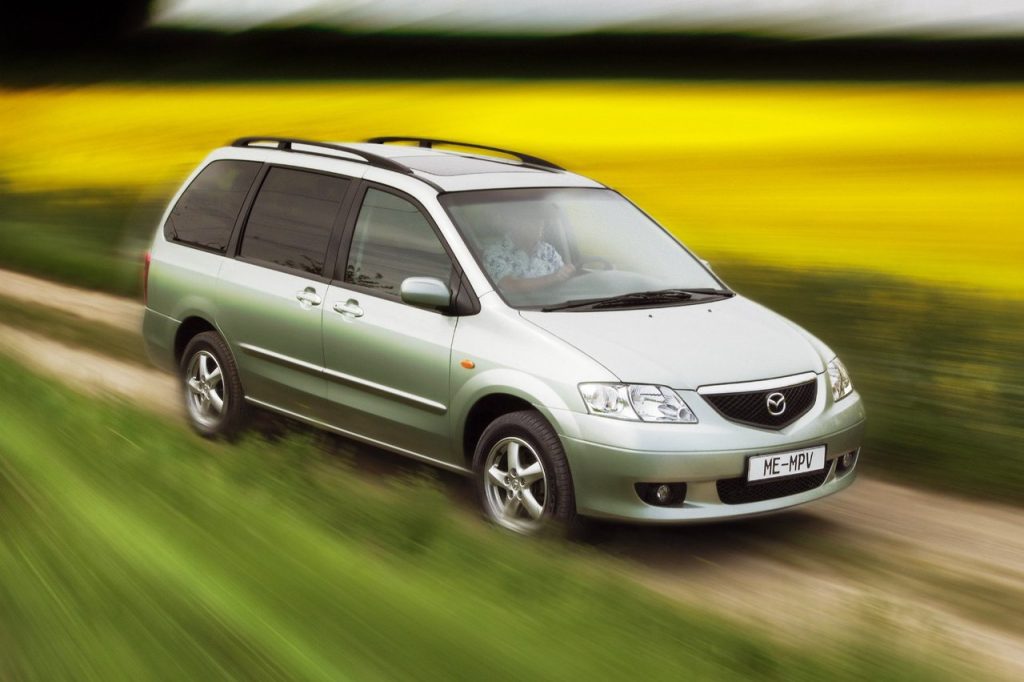
The right-side chair can slide along tracks to align with the left, forming a bench when needed. Both second-row seats are removable, and the third-row seat folds flat into the floor to create a sizable cargo area.
For 2002, the MPV gets a new 3.0-liter V6 engine producing 200 horsepower, providing noticeably stronger acceleration compared to the previous year’s underpowered 165-hp 2.5-liter V6. This upgraded engine pairs with a new five-speed automatic transmission driving the front wheels, while traction control is now standard.
Handling is impressively car-like, thanks to a well-tuned MacPherson strut front suspension and a torsion beam rear axle, both refined to enhance Mazda’s signature “zoom zoom” driving character.
Front and rear stabilizer bars and power-assisted rack-and-pinion steering add to the responsive feel. Braking comes from front discs and rear drums with ABS, now enhanced by electronic brakeforce distribution, and the brake pedal’s feel has also been improved this year.
The MPV is offered in two trims. The LX includes 15-inch wheels, dual sliding doors with roll-down windows, steering-wheel-mounted audio controls, and air conditioning.
Options for the LX include a power driver’s seat, 16-inch wheels, an in-dash CD changer, front side airbags, and traction control. Moving up to the ES trim adds 17-inch alloy wheels, power sliding rear doors, leather trim, and rear air conditioning.
Side airbags and traction control are standard on the ES, though the CD changer and power sunroof remain optional. Both trims offer a winter driving package. However, the MPV’s options list does omit features found in some rivals, such as a tire pressure monitoring system, a reverse sensing system, and a DVD-based entertainment system.
In the end, regular maintenance is key to any car’s lifespan, but choosing the right model from the start can make all the difference between a car that keeps purring and one that breaks your wallet.

